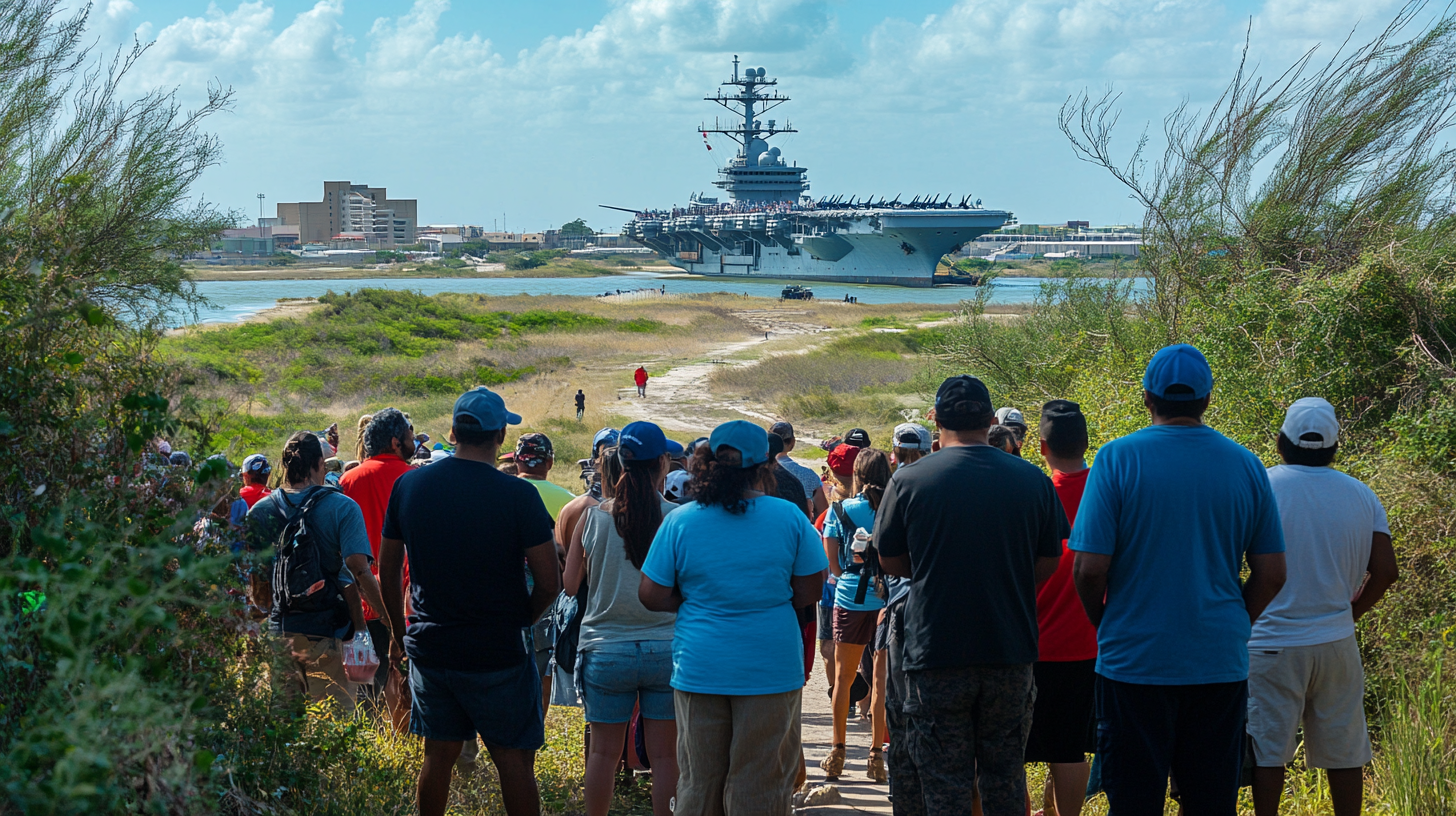USS John F. Kennedy Makes Final Voyage to Port of Brownsville
In a poignant moment for naval history, the decommissioned USS John F. Kennedy (CV-67) entered the Port of Brownsville on February 2, marking the beginning of a new chapter in its storied life. As the Port of Brownsville becomes its final destination, the aircraft carrier will be dismantled and recycled at International Shipbreaking Ltd., a step that underscores both the economic and environmental impacts for the Rio Grande Valley.
A Storied Legacy Arrives at the RGV
Commissioned in 1968 and decommissioned in 2007, the USS John F. Kennedy served the U.S. Navy for nearly four decades, playing roles in numerous operations and missions. Its significance was underscored as Navy veterans and local residents gathered at Isla Blanca Park to witness the vessel’s final journey. Among them was Harlingen resident Richard Makowiec, a former Navy sonar technician who highlighted the importance of recycling the ship’s high-quality steel and acknowledged the skill of Brownsville’s workforce in undertaking such tasks.
“The Port of Brownsville is important as the destination for ships of this quality. The steel that was used was high quality and the workforce down here is highly skilled. As hard as it is to say, I would rather see her cut up and reused in other projects rather than sitting at the bottom of the sea,” said Makowiec.
Economic Impact on the Rio Grande Valley
Known for its expertise in dismantling retired ships, the Port of Brownsville has processed over 85% of the U.S. Navy and Maritime Administration’s ship recycling market. This industry has been pivotal in providing employment opportunities in the region, further solidifying the local economy’s resilience. The port’s work with major ships such as the USS Forrestal and the USS Independence has highlighted Brownsville’s role as a leader in responsible ship recycling.
Jose Garcia, the CEO of International Shipbreaking Ltd., discussed the economic benefits involved, stating, “This process supports hundreds of local families through well-paying jobs. It strengthens our community and showcases our workforce’s outstanding capabilities which boosts our local economy.”
Connecting with the Community
For Valley residents, the arrival and eventual dismantling of the USS John F. Kennedy are not only about economic growth but also about honoring military service. The USS Kennedy holds a place of emotional significance for many who served on it, as well as for the families of those veterans. Gunnar and Tennessee McCurdy, brothers from Elsa, reminisced about their father’s military service and reflected on this unique opportunity to witness the ship’s final chapter.
“This is a once-in-a-lifetime opportunity to see the last conventionally powered carrier,” said Tennessee. “It’s sad it wasn’t turned into a museum ship but it’s great to get to see it.”
Environmental and Future Considerations
Alongside economic impacts, the recycling of such a significant ship carries substantial environmental implications. By reclaiming and repurposing materials like steel, the initiative reduces waste and sets a standard for sustainable practices in the industry. This effort ensures that materials continue serving society well into the future, making a significant positive impact on the environment.
As Brownsville continues to build on its reputation as a recycling hub, the future may hold more opportunities for collaboration with businesses exploring eco-friendly initiatives and sustainable growth. This can pave the way for more innovative projects that marry economic growth with responsible environmental stewardship, benefiting South Texas.
Navigating Challenges and Opportunities
Though the benefits are significant, this development is not without its challenges. Balancing economic incentives with environmental responsibilities requires ongoing dialogue. Policymakers and local businesses must work together to ensure that efficiency does not come at the expense of community well-being or future opportunities.
For those interested in staying updated on developments or learning more about local initiatives tied to this sector, the Valley Business Report offers resources through its weekly VBR e-Brief newsletter and options for subscribing to in-depth print issues. These updates ensure Valley residents are connected to local business trends and key economic shifts.
In conclusion, the USS John F. Kennedy’s final voyage to the Port of Brownsville serves as a testament to the region’s historical, economic, and environmental capabilities. It is a poignant reminder of the Valley’s resilience and its ongoing commitment to sustainable growth, firmly positioning the region as a leader in responsible industrial practices.







